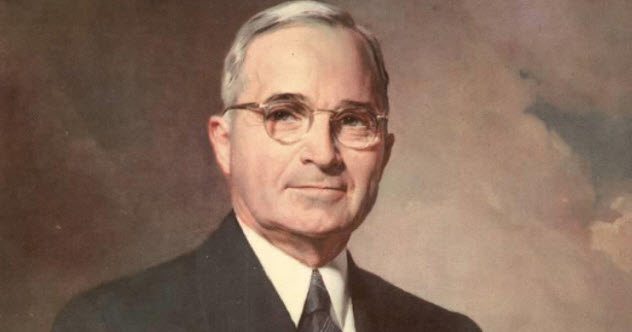 Politics
Politics  Politics
Politics  Weird Stuff
Weird Stuff 10 Eggs-traordinarily Odd Eggs
 History
History 10 Desperate Last Stands That Ended in Victory
 Animals
Animals Ten Times It Rained Animals (Yes, Animals)
 Mysteries
Mysteries 10 Devastating Missing Child Cases That Remain Unsolved
 Creepy
Creepy 10 Scary Tales from the Middle Ages That’ll Keep You up at Night
 Humans
Humans 10 One-of-a-kind People the World Said Goodbye to in July 2024
 Movies and TV
Movies and TV 10 Holiday Movies Released at Odd Times of the Year
 Politics
Politics 10 Countries Where Religion and Politics Are Inseparable
 Weird Stuff
Weird Stuff 10 Freaky Times When Famous Body Parts Were Stolen
 Politics
Politics The 10 Most Bizarre Presidential Elections in Human History
 Weird Stuff
Weird Stuff 10 Eggs-traordinarily Odd Eggs
 History
History 10 Desperate Last Stands That Ended in Victory
Who's Behind Listverse?

Jamie Frater
Head Editor
Jamie founded Listverse due to an insatiable desire to share fascinating, obscure, and bizarre facts. He has been a guest speaker on numerous national radio and television stations and is a five time published author.
More About Us Animals
Animals Ten Times It Rained Animals (Yes, Animals)
 Mysteries
Mysteries 10 Devastating Missing Child Cases That Remain Unsolved
 Creepy
Creepy 10 Scary Tales from the Middle Ages That’ll Keep You up at Night
 Humans
Humans 10 One-of-a-kind People the World Said Goodbye to in July 2024
 Movies and TV
Movies and TV 10 Holiday Movies Released at Odd Times of the Year
 Politics
Politics 10 Countries Where Religion and Politics Are Inseparable
 Weird Stuff
Weird Stuff 10 Freaky Times When Famous Body Parts Were Stolen
Top 10 Autodidacts Throughout History
Thanks in large part to modern technology, anyone can be his own master in learning just about anything. An Internet connection is the cord between us and the wealth of knowledge online about any particular subject. Beyond that, all it takes is initiative.
But the Internet and formal education are not the only ways to learn. Throughout history, some people have used their life experiences to enhance their talents and create their ideologies, for better or worse. These individuals are sometimes called “autodidacts,” which simply means that they acquired significant knowledge and skills without the presence of a teacher or the setting of a classroom.
In some cases, we may wish that they hadn’t.
10 Leonardo da Vinci
The Renaissance Man

Known by all as the painter behind The Last Supper and the Mona Lisa, Leonardo da Vinci’s contributions to 15th-century Europe far exceeded his skills as an artist. He was taught basic writing, math, and reading skills, but he received no formal education.
Da Vinci would later spend a decade of his life refining his artistry under the apprenticeship of Andrea del Verrocchio of Florence. Beyond this, da Vinci was entirely self-taught and created many scientific concepts and plans for inventions that never left the inside of his notebook.
He scrawled many ideas that connected nature and science, most notably his invention of a 20-meter (65 ft) mechanical bat. His interest in anatomy prompted him to brilliantly produce a drawing of a flying machine that mimicked a bat.
Echoing what fellow admirer Sigmund Freud once stated about da Vinci, he was “like a man who awoke too early in the darkness, while the others were all still asleep.”[1]
9 Frank Bender
The Recomposer
Frank Bender, the self-proclaimed “recomposer of the decomposed,” used his artistic talents to help fight crime. With zero training, he became a prominent forensic sculptor of the late 20th century and his hauntingly lifelike face sculptures helped to solve many cold cases.
Prior to his calling, Bender was in the navy and spent some years as a commercial photographer. He could create a clay sculpture by seeing as little as a fractured skull of the victim. However, his most notable case came from the sculpture of an elusive killer, in which his clay mask of the notorious John List directly led to his arrest.
What made Bender one of a kind was not only his intuition and seemingly sixth sense[2] about the victims and their characteristics but also his optimism and passion for helping people. He died of pleural mesothelioma in 2011.
8 H.P. Lovecraft
The Hermit Of Horror

H.P. Lovecraft’s impactful and dark writings forever expanded the horror genre. He lived a life of isolation and prejudice that would cripple him from ever creating a name for himself during his lifetime. His legacy wasn’t born until years after his death.
Both of his parents had mental health issues that led them to the same insane asylum. More than likely, this reality was reflected in Lovecraft’s own delirium. His stories influenced many works by Robert Bloch, including Psycho (1959).[3]
Lovecraft passed away penniless in 1937 at age 46. Though his dark perspective was something he could never escape, his stories inspired the creation of literary subgenres like “cosmic horror” and the work of icons like Stephen King and Guillermo del Toro.
7 Julian Assange
The Whistle-Blower

Julian Assange is a great representation of a modern autodidact. Many know his name and his timeline of events over the last 10 years. For those who don’t, he is the founder of WikiLeaks and is highly skilled in hacking and computer codes.
Assange is responsible for bringing to light emails from the DNC, videos of war crimes, and other classified documents. Some call him an attention-seeking criminal, while others praise him for revealing the dark truths of the US government.
Assange was raised in Queensland, Australia, and spent most of his life on the road with his mother and stepfather. In total, he went to 37 different schools. He began hacking and programming at 16 after his mother bought him his first computer. His inclination for mathematics and his high IQ contributed to his talents. He went to the University of Melbourne but never earned a degree.[4]
6 Adolf Hitler
The Racist

Known to the world as the ruthless leader of Nazi Germany, Adolf Hitler’s horrifying idea of nationalism resulted in the deaths of six million Jewish people. His campaign to rid the world of Jews also led to World War II.
Many know of Hitler’s colorful military accomplishments, Mein Kampf, and his rise to political power. However, his youth was surprisingly lackluster. By his 18th birthday, he had dropped out of school, lost both parents, and bounced from orphanage to orphanage.[5]
Initially, Hitler showed great interest in painting, but he was rejected twice by the Academy of Fine Arts in Vienna. His ethnocentric views may have developed after his attempts at artistry failed. His ideologies were influenced in Vienna by two anti-Semitic political leaders, Vienna Mayor Karl Lueger and politician Georg von Schonerer.
Hitler’s racist perspectives continued to grow as he rose to military power and eventual dictatorship.
5 Granville Woods
The Black Edison

Granville Woods never gained the mainstream recognition of other revolutionary inventors such as Alexander Graham Bell or Thomas Edison, but his contribution to the railroad system in the 19th century had a great industrial impact.
Born in 1856 in Columbus, Ohio, a teenage Woods showed interest in mechanics. But he left school to help his family financially. His many jobs on railroad systems sharpened his knowledge and led him to several great inventions, such as the “troller” and the “induction telegraph.”[6]
With little to no education, he received 60 patents, owned a company, and invented telecommunications and railroad machinery that has made transportation safer.
4 Ferdinand Waldo Demara Jr.
The Great Impostor

This high-profile criminal spent the better part of his life disguised as other people. By age 16, Ferdinand Waldo Demara Jr. had run away from home and joined a monastery. Despite this, Demara felt like he had a greater purpose and spent the next few decades assuming multiple identities.
His acts included a religious psychologist, military soldier, and law student. But his most fascinating role was that of a medical doctor in the Canadian Royal Navy. He posed as Dr. Joseph Cyr, a medical surgeon. While aboard a Canadian destroyer during the Korean War, Demara performed lifesaving procedures on over a dozen men.[7]
This role-playing was made possible by his presumably high IQ and photographic memory. Throughout the 1940s and ’50s, he continued to impersonate people and spent time in jail as a result. Tony Curtis played Demara in the 1961 movie about his life.
3 Kato Lomb
The Polyglot

Kato Lomb offered the purest explanation in describing her success in learning 16 languages over her lifetime. She advocated motivation as the key ingredient, and inhibitions would be the only formidable force preventing someone from mastering a language quickly.
Born in 20th-century Hungary, she received a good education. Although she earned a PhD in chemistry and physics, she admittedly didn’t have an innate skill in picking up languages.[8]
It wasn’t until her mid-twenties that she began studying English. She learned English along with 15 other languages and wrote the book, Polyglot: How I Learn Languages. Her success became an inspiration for adult learners looking to master multiple languages.
2 Booker T. Washington
The Wizard Of Tuskegee

One of the most influential African Americans of the late 19th century, Booker T. Washington uplifted the black community during the time of Jim Crow with controversial methodologies. Born on a slave plantation to a white father and a black mother, Washington got a taste of both worlds.
He worked on a plantation at a young age but also received an education at Hampton Institute. His upbringing contributed to his bourgeois thinking, but his ultimate goal was to help the historically disfranchised by teaching economic self-reliance to African Americans.[9]
His ideologies made him many enemies, including W.E.B. Du Bois. During his lifetime, Washington served under Theodore Roosevelt as a black adviser and founded the Tuskegee Institute, which was dedicated to training African Americans to become teachers.
1 Harry S. Truman
The Haberdasher

Born on May 8, 1884, Harry S. Truman had a modest upbringing in rural Missouri. Raised on a farm, he spent his post–high school years doing odd jobs and helping his father on the farm instead of going to college.
Eventually, Truman joined the National Guard at age 33. He proved himself a worthy leader in the Meuse-Argonne campaign and made many allies who would catapult him into his political career later in life.
Once home, he got married and opened up a hat shop that went bankrupt. Despite this, his reputation helped him to enter politics. He became a county judge, then a US Senator, and eventually Vice President to Franklin Delano Roosevelt.
When Roosevelt passed, Truman ended World War II by dropping atomic bombs on Hiroshima and Nagasaki. His other presidential accomplishments included helping to rebuild post–World War II Europe and desegregating the US military. He was the only president of the 20th century to gain the title without a college degree.[10]
Samantha is just another broke college student! Visit her on Instagram.
Read about more poorly educated but successful people along with books that influenced the highly successful on 10 Poorly Educated But Incredibly Successful People and 10 Books That Greatly Influenced Famous And Successful People.




![Top 10 Most Important Nude Scenes In Movie History [Videos] Top 10 Most Important Nude Scenes In Movie History [Videos]](https://listverse.com/wp-content/uploads/2019/09/sharonstone-150x150.jpg)



